For many, this scenario brings up their most personal worst fears: of martial law and dictatorship, of mandatory, improperly tested vaccines, of poverty, of a financial collapse, of corporate greed, of government incompetence, of food running out. Of the creepy 5G satellite system we’re told will soon blanket the globe and every street.
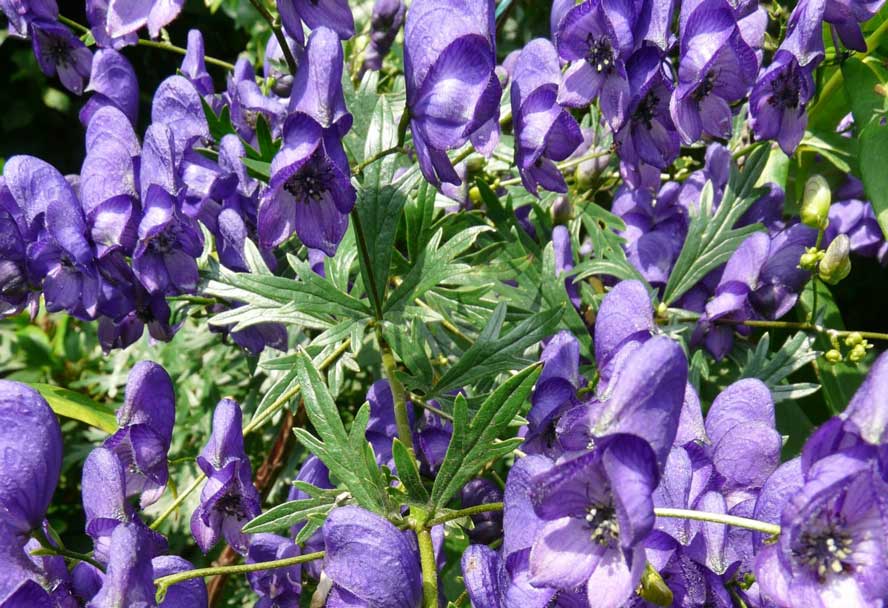
Keep off the path, beware of the gate
Watch out for signs that say “hidden driveways”
— The B-52s
Dear Friend and Reader:
I’ve been noticing that “the virus” means something different and special to everyone. It’s like a religion where everyone has their own personal relationship to the lord, who is a broken fragment of RNA. Everyone has their own idea about what it is, where it came from, how dangerous it is, and how to protect themselves. Some have no fear at all. Some think they are confronting the most harrowing threat of their lives.
There are people who think social distancing should extend to photos. There are people who treat the mail like it’s been dusted with anthrax personally by Osama bin Laden. They wash off their parcels from Amazon with Lysol. I heard of one fellow whose daughter says he undresses in the garage directly into the washing machine and enters the house in clean clothes.
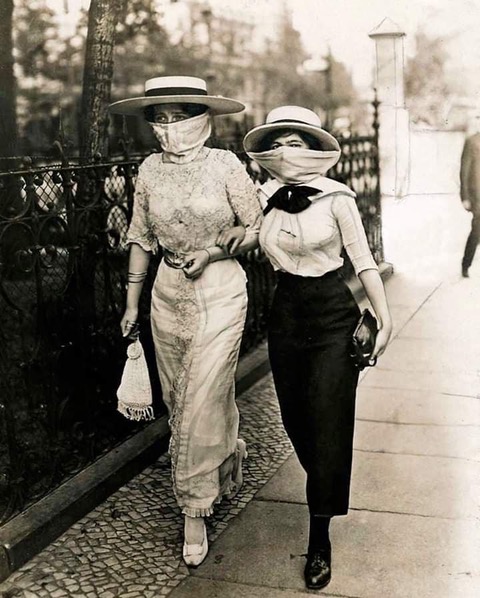
For many, this scenario brings up their most personal worst fears: of martial law and dictatorship, of mandatory, improperly tested vaccines, of poverty, of a financial collapse, of corporate greed, of government incompetence, of food running out. Of the creepy 5G satellite system we’re told will blanket the globe and every street.
Our new society where “social distancing” will be a way of life long after anyone remembers why. Others take comfort in being told exactly what to do, without understanding why.
Is everyone still washing their hands every 10 minutes, or have we all forgotten that bit? Remember? Sing Happy Birthday twice, every time you wash your hands.
Notice, though, how it is socially inappropriate not to be afraid of the virus. No matter how much you may know, if you’re not worried, you’re going against the new religion.
Then there is the puritanical fear of everything being contaminated with germs (but not with chemicals; chemicals kill germs). American society is the one where things are shrink-wrapped three times. Now we must be assured that nobody will touch your pizza before it comes out of the oven. But this is supposed to be a respiratory illness. It’s not spread through pizza. But it might be, who knows what they will say tomorrow.
That fear is stoked by media images of caskets being loaded into trucks, and of new mass graves on Hart Island in the Bronx. There are already more than a million people buried in that massive potter’s field, buried there since 1869. Most are unclaimed cadavers.
Notice, though, how it is socially inappropriate not to be afraid of the virus. No matter how much you may know, if you’re not worried, you’re going against the new religion.
Americans are already a bunch of hypochondriacs. They go to the doctor more than they go to the gym. Now, any symptom you have may or may not be caused by the coronavirus: fever, sore throat, sneezing, coughing, sore toes, the chills, fatigue, or loss of sense of smell: you might have it, you might not. This is putting everyone in a state of agitation and fear, complicated by the fact that most people don’t know how to take care of themselves, or to tell whether they are sick or well; so they go to the doctor. A lot.
But more than Americans fear viruses, they fear being seen as not respecting authority. Here in the land of the free, that’s a form of heresy. And it’s true many places.

Choose Your Scenario
For some, this whole scene is an impeccable impersonation of Day of the Triffids (where an alien invasion of hostile, ambulatory, poisonous, carnivorous plants takes over the world — watch free on Amazon Prime). For others, it’s more like Orson Welles’ War of the Worlds radio performance in 1938, the biggest realtime psychology test up until the time of Sept. 11, 2001.
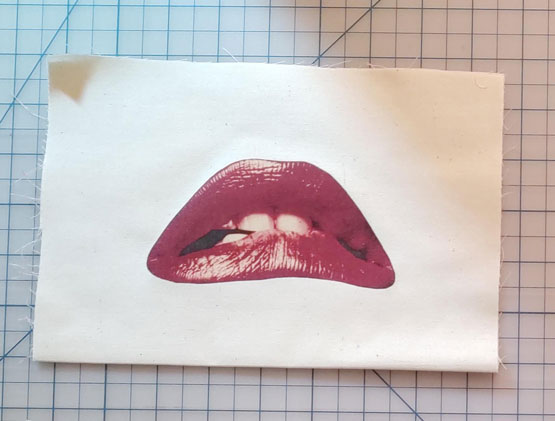
People are divided about the effectiveness of wearing a mask. That’s probably because they heard five different versions of the story on TV, which went like this: it works, it doesn’t work, it’s ridiculous, anything such as a repurposed bra cup helps, or you definitely need an N95 or HEPA. The new one is wearing a stocking over your mask. Now everyone will really look like a bank robber.
Some know that their bandanna’s thread count is to the virus what the Grand Canyon is to a sparrow, but they wear it anyway, because it makes them feel better. (Cheryl Corson, the Planet Waves textiles bureau chief, has outfitted me with a vintage fabric Daisy Duck edition, and one with Magenta’s lips from “Science Fiction/Double Feature,” the opening theme of Rocky Horror Picture Show, which seems more appropriate now than ever.)
There is this seething, simmering idea that anyone you meet might potentially be the grim reaper. Your best friend or child might “have it” and kill you. You might say hello to someone and be in the ground a month later. That’s going to take a while to recover from.
Note: the USNS Comfort has been given back to the Navy. The Javits Center field hospital is barely being used.

On the Beach, On the Ward and In the Boardroom
There are places where you would get the idea nothing unusual is happening, such as at a protest organized by Republicans in Georgia, or a beach. Listening to my police scanner in upstate New York, it’s clear that the human race is as off the charts as ever. It’s actually worse than normal; you can tell people are under pressure.
There are dimensions to this crisis that are unthinkable horrors: people suffocating alone in their apartments, found weeks later; or shivering on hospital wards attended by people whose faces they cannot see, surrounded by pain and death. There are people unconscious with machines breathing for them. One out of three isn’t leaving the hospital alive. Someone has died connected to every one of those ventilators.
The president thinks injecting disinfectant will kill the virus. He said so Thursday. Lysol had to issue a statement that “under no circumstances” should this be done.
Corporate boards of pharmaceutical companies are meeting, divvying up billions in government funds granted to them. The president fired the government’s longtime top vaccine expert for resisting the idea of a therapy protocol that has induced cardiac arrest in Covid patients.
Bill Gates has proposed we shall need a digital certificate of immunity to leave our homes and go back to work. He has the cure. I am typing this article in Microsoft Word. It keeps freezing up.
Food bank lines are miles long. Whole Foods admits people a few at a time. The aisles of Walmart are now one-way streets.
You can be arrested for standing too close to a friend, not for conducting a drug deal but for having a conversation on the street. You’re lucky if your friend doesn’t treat you like you “have it.” You will invariably hear their theories about “it.”

And Then There Are All Those Conspiracy Nuts
You can be called a conspiracy nut if you even consider the possibility this may have something to do with the activation of the 5G millimeter wave communication system. It’s so harmless we’re going to test it on the entire human race and see how safe it is.
As journalist Celia Farber pointed out recently, someone can be considered a nonperson for questioning the official narrative in any way. That is another way of saying a dissident or heretic.

In fact, the virus did not come from a bat in a dirty market in China. It existed elsewhere, before that supposed Huanan Wet market outbreak happened; contact tracing published in The Lancet has proven this. Therefore it came from somewhere else first. The Huanan Wet Market version of events is a cover story.
There are not a lot of possibilities left, since most people don’t hang out in caves making out with bats, nor are they sold at markets, nor do Chinese people suck their blood or make them into soup.
How exactly did the “bat virus” make it more than 100 miles from the bat cave where it originated, all the way to Wuhan? Is there some new migratory route?
Why exactly is there a bat virus factory in Wuhan funded by the U.S. government? It’s called an “institute” to make it sound a little more bookish. Does it have a library?
By why, I mean why, exactly? Not the excuse of “we will study these viruses for the good of mankind, so we know what to do if there’s an outbreak.”
Well, kids, I heard on the news that there is one happening now, so what exactly can you do to help? That’s what you’re there for, right? For no other purpose, correct?
Well, what are you waiting for? You’re supposed to have an antidote or something, right? I keep getting press releases claiming that the virus going around did not come from the virus factory, even though that’s exactly the kind of virus they study there. We know it didn’t come from the market. We’re running out of places it could have come from.
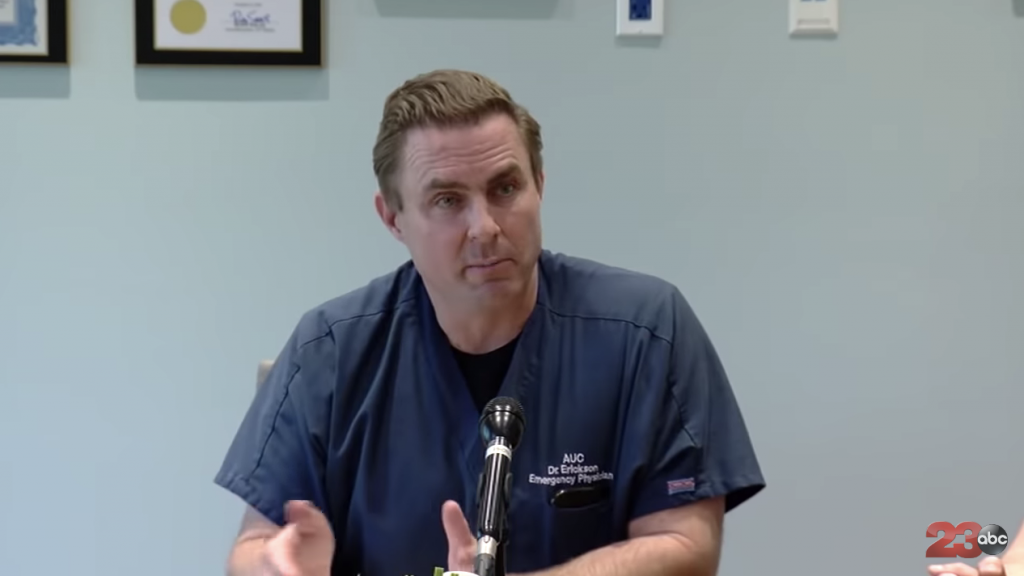
A Holistic View
One of the things that grieves me is that I believe many of the cases of Covid-19 we are seeing could be prevented. Many people dying could be nursed through this illness if they had better care. There are many people who have trained all their lives to provide that care, but they’re not getting the patients. Hospitals are.
I don’t think that a frantically busy hospital ward with a high background viral load (or bacteria count or whatever it is), is a good place for a sick person. In fact it is a terrible place. People sick with this illness need a clean, quiet, warm and sunlit room in which to heal. Is that asking too much? Hospital-grade ventilators cost from $25,000 to $50,000 each.
For all the medical drama and talk of N95s and ventilators, note that there is actually very little medical science can do to help someone with this disease. Many of the things they’re doing are hurting people, like giving anyone Tylenol, which shuts down the component of the immune system needed to stand up to this kind of problem.
Once a person is sick, there is no actual protocol for helping them heal; they are basically given minimal attention in a hospital ward: things like food, water, and IV. They are left alone; nobody can visit. Nobody speaks to them except for cursory visits to check their chart. This is a recipe for death, and a lonely sad one.
Care has not changed much since the time of the 1918 flu pandemic. Nobody I say this to seems particularly impressed with how outrageous this is. Modern medicine “cannot cure the common cold” and it cannot cure this. The only difference is now we have ventilators, which are the last-gasp treatment, because there was nothing else. One-third of those people die.
You don’t hear about any of this stuff because as far as I can tell, either Christians are still afraid of witches, or people would rather have no options for prevention or care than one-way aisles at Walmart, wearing a dust mask and laying in a hospital bed with a tube down their throat. Herbalism is not “proven science,” but neither is proven science, because it has nothing helpful to offer.
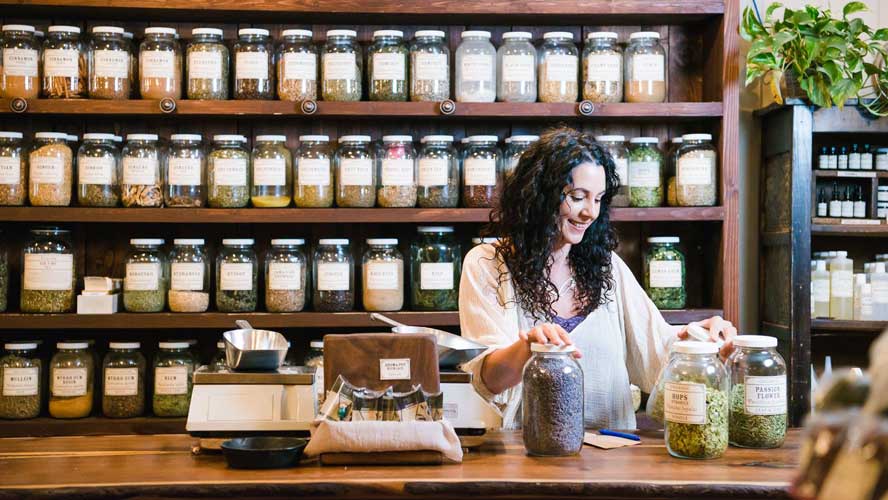
Ask a Witch — They Know
From what I’ve observed over the years, patients would be much better off in the care of holistic practitioners. First, there are many, many preventive measures you can take, besides digging out your bandanna from 1983 and treating your neighbor like a member of the Manson clan.
Any well-trained herbalist, naturopath or homeopath can handle this kind of issue. A good place to start would be to nourish and tonify, the first treatment step in the Wise Woman tradition. That means actual nourishment, and supporting the immune system, which are approximately the same thing. Merely informing people to supplement and gargle with zinc could prevent much suffering and save lives.
You don’t hear about any of this stuff because as far as I can tell, either Christians are still afraid of witches, or people would rather have no options for prevention or care than one-way aisles at Walmart, wearing a dust mask and laying in a hospital bed with a tube down their throat. Herbalism is not “proven science,” but neither is proven science, because it has nothing helpful to offer.
There is a notion that we’re supposed to wait around watching CNN for 18 months to five years for a vaccine, like the apocalypse followed by the Second Coming. Meanwhile, nutritional and herbal protocols can actually help the body ward off disease. But not if you’re afraid of them or don’t do them or don’t know about them.
This is not a new concept. Herbalism has followed the human race since back when we were hunting and gathering. The “gathering” part is about food and plant medicine. The same people who brought you nuts and berries also brought you a lot of other gifts. They are all still sitting under the tree. Knowledge is power — if you use what you know.
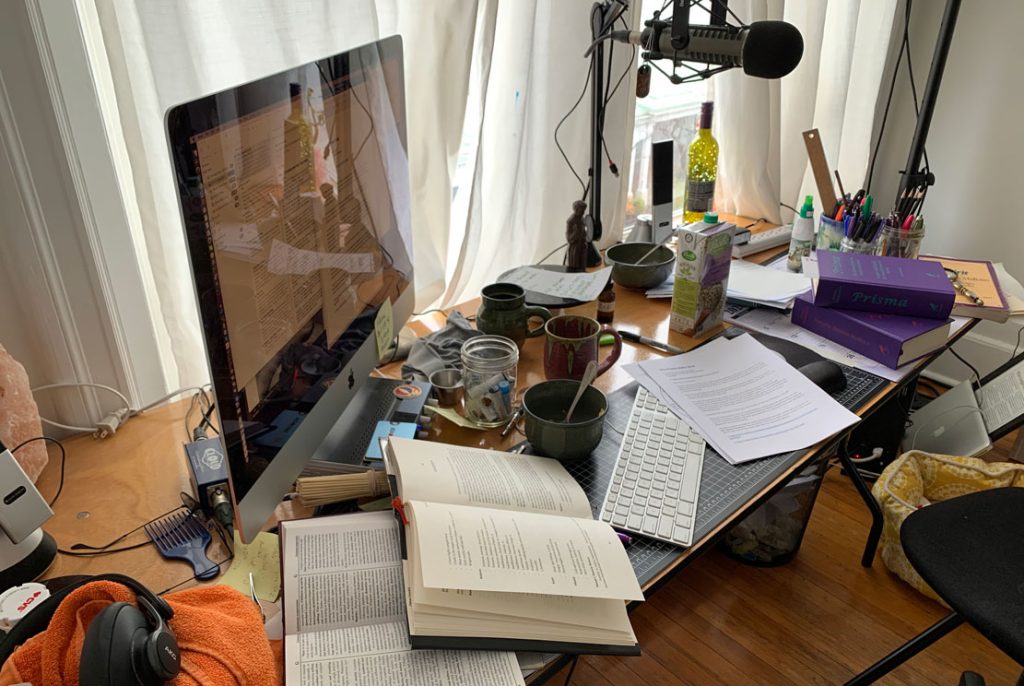
The properties of remedies offer an extraordinary diversity of highly specific symptoms, including much information about state of mind, and distinct attributes of physical conditions (better when warm, worse at night, affects left side only, music ameliorates, to give a few examples). Hahnemann’s ideas about mind-body integration helped pioneer the holistic principle. Much of the thinking that today influences everything from massage therapy to energy healing to nutrition has roots in The Organon.
Mind Map: Four Perspectives from Homeopathy
Note, this section has been reviewed by four professional, well-experienced homeopathic practitioners, in the U.K., the U.S., and the Netherlands. Three are instructors or teachers in the field. They have signed off on my research.
Samuel Hahnemann (1755-1843) was a medical doctor who rebelled against conventional medicine because he saw it hurting too many people with its poisonous medications. He quit, and became a translator, because he didn’t want to hurt anyone. He understood and followed his oath: “Do No Harm.” Then in the course of his new work, he made a discovery that led to the invention of homeopathy and the first remedy, called China officinalis.
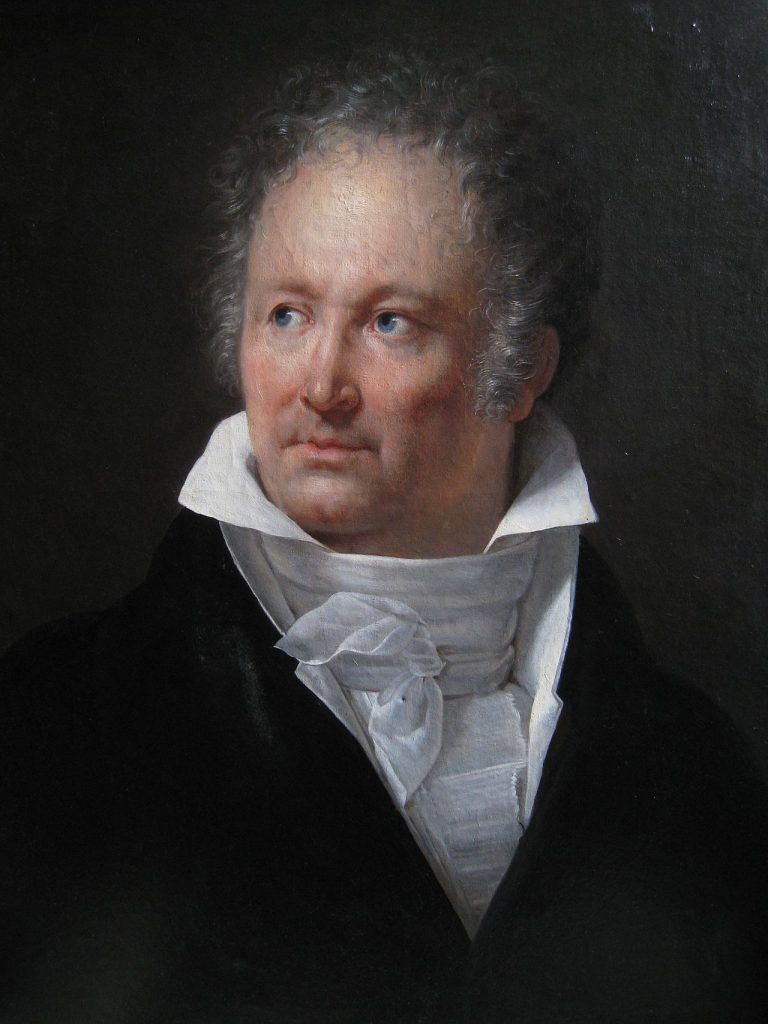
Hahnemann’s book of medical theory, The Organon of Medicine, was first published 210 years ago. In it he explains the principles underlying homeopathic practice.
A practitioner of the healing art, he writes, “clearly perceives what is to be cured in diseases, that is to say, in every individual case of disease (knowledge of disease, indication), if he clearly perceives what is curative in medicines, that is to say, in each individual medicine (knowledge of medical powers).” [Sorry, this is old writing translated out of German and the syntax of this quote is difficult to follow, but the meaning comes across.]
The properties of remedies offer an extraordinary diversity of highly specific symptoms, including much information about state of mind, and distinct attributes of physical conditions (better when warm, worse at night, affects left side only, music ameliorates, to give a few examples).
Hahnemann’s ideas about mind-body integration helped pioneer the holistic principle. Much of the thinking that today influences everything from massage therapy to energy healing to nutrition has roots in The Organon.
In homeopathy, both the remedies and the patient’s condition are highly specific. In the case of an epidemic, however, there is sometimes one remedy that addresses the problem, called the genus epidemicus.
The properties of remedies offer an extraordinary diversity of highly specific symptoms, including much information about state of mind, and distinct attributes of physical conditions (better when warm, worse at night, affects left side only, music ameliorates, to give a few examples).
There is not a genus epidemicus for coronavirus and COVID-19. For the supposedly new coronavirus and COVID-19, I am aware of two protocols, with four remedies being used. There are others floating around; these are the ones I’ve heard the most and understand the best. In the words of The Organon, to identify the genus epidemicus, the homeopath must focus on “the strange, rare and particular should be foremost in the physician’s mind.”
Some of the leading homeopaths have done some excellent work, and I can share with you a summary of their notes. Please do not try to treat yourself; if you feel drawn to homeopathy, consult a practitioner. No remedy will poison or kill you but the wrong remedy can complicate your situation. I do feel confident saying that Gelsemium is effective for fear associated with the virus, and is available in most health food stores.
I’d like to describe four remedies, so you have an idea how homeopaths are thinking. As I have written before, homeopathic remedies for this kind of issue are like a catalog of fear.
Because homeopathy is so focused on the mental state associated with the physical symptoms, the remedies present a mind-map to our situation. I’m not suggesting you take them, but if you resonate with one or more of them, I do suggest you discuss that with a homeopath. Using homeopathic remedies requires training, study and practice. With Covid-19 we are talking about a potentially life-threatening illness. If you or someone you know is sick seek professional help.
These are sketches, not the full remedy picture. Note that because it dilutes the original substance beyond chemical detection, homeopathy can use various toxins as remedies.
Frans Vermeulen says the remedy is, in some legends, associated with the blood of Prometheus. “This is not a quest for spirit for its own sake, along the path of gradual self-spiritualization, but the use of spirit for purposes of self-gratification,” adding, “by unleashing material cravings, liberation becomes imprisonment in matter.”
Aconitum.
This deadly plant inspires many mythological inferences. It’s historically associated with the 12th labor of Heracles. At least it’s the last one, though this is another tale where a poison is weaponized by the great hero of Greek lore.
Frans Vermeulen says the remedy is, in some legends, associated with the blood of Prometheus. “This is not a quest for spirit for its own sake, along the path of gradual self-spiritualization, but the use of spirit for purposes of self-gratification,” adding, “by unleashing material cravings, liberation becomes imprisonment in matter.”
French homeopathic pediatrician Didier Grandgeorge associates this remedy with the Sphinx: solve the riddle or face certain death. That’s how a lot of people feel right now.
This is a remedy used for many diverse physical and psychological ailments that are associated with fear. One of the most commonly used remedies for acute issues, Rajan Sankaran says it’s associated with “violent stress, whether physical or the fear of sudden death.”
More specifically he describes it as “a sudden, intense threat from the outside that comes suddenly and goes suddenly.” People who need this remedy suffer from “great impatience” and try to predict the time of their own death. He includes “nightmares, phobias and panic attacks.” Gee, that sounds about right.
Keep reading about Bryonia and you will see that it is about obsession with business in all forms, perhaps as a diversion. This sounds like the toxic side of Vesta.
Bryonia.
What first got my attention about this remedy was Didier Grandgeorge’s observation of the patient wanting to stay home. This matched the image of, well, the whole world staying home. Except in Sweden, where they are having excellent results not doing so.
“The feeling of a loss, which has to be made up very fast. One of the common ways of making up the loss is by business,” as described by the modern master Rajan Sankaran, one of the doctors I’ve studied the most closely. He talks about Bryronia person’s urge to take a risk to increase their wealth. The remedy picture includes fear of poverty, and a delusion of fancying that one is doing business.
Keep reading about this remedy and you will see that it is about obsession with business in all forms, perhaps as a diversion. This sounds like the toxic side of Vesta.
Vermeulen adds, “Confusion at night when waking from a dream,” “Fear of the dark, and of ghosts,” and “Hysteria from suppression of sexual excitement.” Also, sleepwalking.
Vermeulen quotes an older reference: “Felt as if he thought to kill someone when in the street.” And how about, “Monomania with horrible visions and torturing thoughts about religion, which he cannot shake off, although he is conscious they are morbid.”
Camphora.
The interesting thing about this remedy is that it’s usually considered the antidote for other remedies. Isn’t that a good idea? Homeopathy has a way (a few actually ways) to handle the wrong prescription, and Camphora is one of them.
It’s also a remedy that can be given at the first sign of a cold to nip it in the bud, and has physical symptoms that include strong chills. (This is a prominent symptom in some cases of Covid-19 — some say the chills are the worst they have ever felt.)
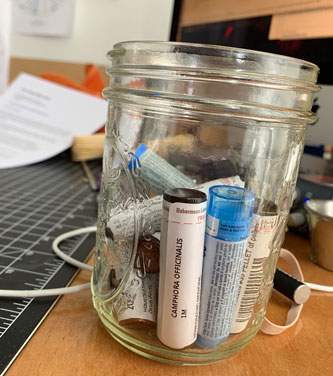
The remedy is derived from a very large tree, related to cinnamon, that can grow 40 meters high and be five meters at the base. All parts of the tree contain camphor oil.
Robin Murphy writes, “Afraid of his own thoughts, wants to be diverted from thoughts of himself. Fears to be left alone. Does not like anyone near him. Memory lost. Most pains are felt during half-consciousness and disappear when thinking of them. Worse from inattention.” So to me this remedy sounds, among other things, like a struggle with self-awareness.
My first homeopath, Katy Bray, added a thought about this remedy: “I have not gotten a sense of this remedy as a struggle with self awareness as much as a struggle to stay physically conscious. It is a very confused state, with a feeling of being forsaken and isolated (interesting in the light of all the nursing home deaths) also with a very peculiar symptom of being icy cold yet averse to covers.”
Vermeulen quotes an older reference: “Felt as if he thought to kill someone when in the street.” And how about, “Monomania with horrible visions and torturing thoughts about religion, which he cannot shake off, although he is conscious they are morbid.”
“One aspect of Gelsemium is that of a coward who is disgusted by his own cowardice and cannot tolerate it. At some stage, he plucks up courage and sets out to conquer his fear by exercising all the self-control he can muster. By constantly pulling himself to the tests on life challenges, he becomes a person of considerable caliber, but always with underlying nervous pathology.”
Gelsemium.
This is a common remedy for stage fright (“ailments from anticipation”) and diarrhea, made famous because it was the genus epidemicus for the 1918 flu pandemic. I have a whole article about that here, quoting the studies that established that homeopaths could bring the mortality rate down from 30% (yes, thirty percent) to about 1%. Today it can treat Covid, but mostly anxiety related to it.
Thanks to Gelsemium, there were no “floating coffins” on the way back from World War I if the ship’s surgeon was a homeopath. You don’t hear about this because in that day you could treat the entire ship with $1 worth of the remedy. Today it would cost about $100 (retail value) to treat an entire shipload of soldiers. However, homeopaths could only get a result if the patient was not treated with aspirin first. Overdosing aspirin caused many, many deaths from hemorrhage during the 1918 epidemic.
Vermeulen sums up the state of mind, quoting an older reference: “One aspect of Gelsemium is that of a coward who is disgusted by his own cowardice and cannot tolerate it. At some stage, he plucks up courage and sets out to conquer his fear by exercising all the self-control he can muster. By constantly pulling himself to the tests on life challenges, he becomes a person of considerable caliber, but always with underlying nervous pathology.”
Murphy adds: “Mental dullness, dizzy, drowsy, and droopy” (sounds like four of the Seven Dwarfs). And Sankaran sums up: “I have to keep my control when going through ordeals I have to be able to withstand very difficult, trying situations. I have to be able to withstand shock and bad news without losing control.”
And there you have it.
With love,

Books used for this section (all are available at Homeopathic Educational Services)
The Spirit of Homeopathic Medicines, by Didier Grandgeorge, MD
Nature’s Materia Medica by Robin Murphy, ND
The Soul of Remedies by Rajan Sankaran, MD
Prisma by Frans Vermeulen with help from 100 of his students
Synoptic Materia Medica: Prisma Part Two by Franz Vermeulen
The Organon of the Medical Art by Samuel Hahnemann, MD




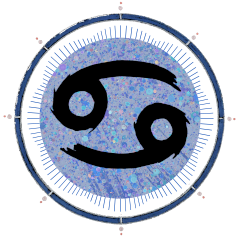
Another wonderful article!@ Manyn thanks Eric. BTW, I can’t wait to see a pic of you wearing your ‘The Lips’ edition safety mask. It outdo Andy Warhol I am sure!
Another wonderful article! Many thanks Eric. BTW, I can’t wait to see a pic of you wearing your ‘The Lips’ edition safety mask. It will outdo Andy Warhol I am sure!
Eric. Fantastic piece. Homeopathy has been my number one path towards health and happiness for a very long time. I reject almost all western medicine unless it’s an engineering issue such as a broken bone or stitches. Are you aware of the Banerji Protocols? I take one of their remedies which combines Aconitum with Bryonia. If taken at the hint of an illness, symptoms vanish. I am never without it.
Again. The deepest gratitude for all that you do on behalf of humanity.